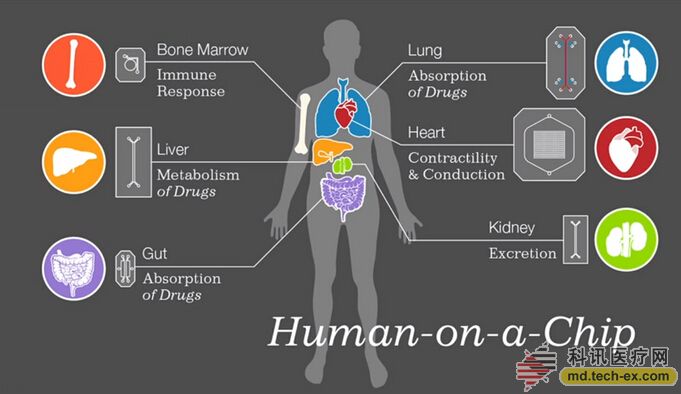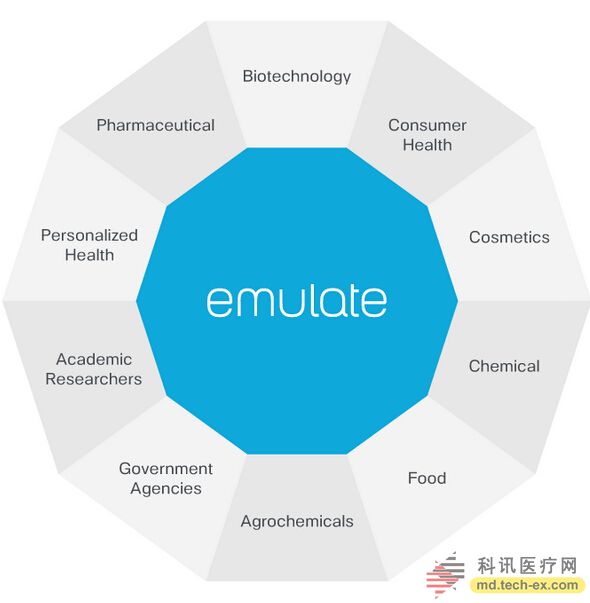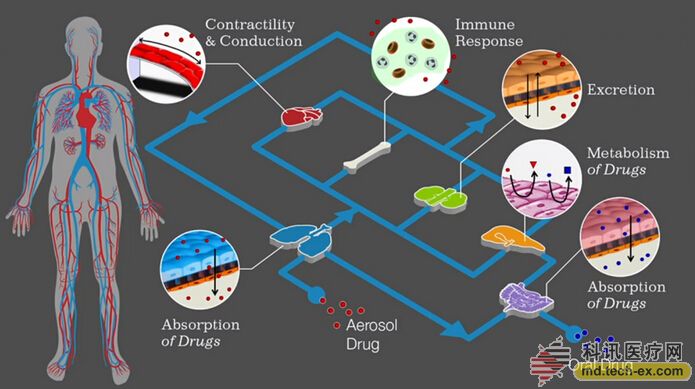A bold human research project: can organs be integrated into the chip?
Release date: 2015-09-28
According to legend, "King of Medicine" Shennong is determined to taste the disease and to determine the medicinal properties. Shennong tasted a hundred herbs, poisoned many times, and eventually died because of trying to break the grass. Don't think that this kind of thing only happens in myths, and the famous Barry Marshall has done more "outrageous" things. In order to study the pathogenicity of Helicobacter pylori, Marshall took a test tube of H. pylori in one go. In the end, after 5 days, his purpose was reached, and he almost died of illness. Later, he won the 2005 Nobel Prize in Physiology and Medicine for his research on the contribution of Helicobacter pylori.
The reason why the Marshalls are "willing to be awkward, drinking drugs and not even eyes" is because the technology is backward at that time, or there is no suitable research model. Later, because it was too dangerous to test the poison, I caught the mice, monkeys, etc., and let them go to the top of the package. At the same time, in order to study the effects of new drugs on the human body, scientists began to cultivate human cells in a culture dish to see if these new drugs have toxic side effects on human cells. Those new drugs can only enter human clinical trials after passing these two levels.
However, mouse and human ex vivo cells do not provide a good test for humans. According to statistics, the probability of passing the clinical phase I and III of the new drug entering the clinical trial is about 60%, and the probability of passing the clinical phase II is only 30%, so that only 10.8% of the drugs that can successfully pass the phase III clinical trial. . The new drugs that are clinically lost by KO are mainly due to poor efficacy and even toxic side effects on the human body.
90% of new drugs have to be KO, which is a huge waste. According to statistics, the average research and development cost of a new drug is as high as 1 billion US dollars, which lasts for 8-14 years. A more rapid and effective preclinical laboratory method must be found to shorten the drug development cycle and reduce R&D costs.
Human Organ Chip Development Program
To address this challenge, the National Center for Health Research (NIH), the US Food and Drug Administration (FDA), and the US Department of Defense Advanced Research Projects Agency (DARPA) jointly launched "organs-on-chips" in 2012. ) R & D work, plans to invest $ 75 million.
Let's take a look at the lineup of participating R&D teams: Columbia University, Cornell University, Duke University, Harvard University, Hopkins University, MIT, University of Wisconsin, University of California, University of Washington, Vanderbilt University, Germany More than ten American universities, including the University of Texas, the University of Pittsburgh, and the University of Pennsylvania.
What kind of technology is this “organs-on-chipsâ€, which has touched the hearts of so many top institutions?
Let's take a look at the innovative work of Harvard University's Wyss Institute at the forefront, detailing the "organs-on-chips" technology.
In the preclinical experiments of new drugs, the mouse model can be used to understand the impact of new drugs on the whole, but it can not reflect the impact of new drugs on the human body. Using human cells cultured in vitro can understand the impact of new drugs on the human body, but lacks Overall grasp. Therefore, as early as more than 10 years ago, Mike Shuler of Cornell University first proposed the idea of ​​constructing human tissue on a chip using cells of different organs of the human body to simulate the human environment.

Detailed description of the basic structure of the chip with a lung chip developed by the Wyss Institute
The Wyss Institute uses the technology of making computer chips to implant living human organ cells onto a chip, while the chip mimics the environment in which cells are in the human body. There are three parallel fluid channels in the channel of the chip, the channels on both sides are vacuum channels, and the channels in the middle are channels for implanting cells.
There is a transparent biofilm in the middle of the middle channel, and the film is covered with small holes. A layer of lung cells is spread over the membrane, and the other side of the membrane is covered with vascular cells. Therefore, air can be circulated on the film, and blood can be circulated below. In addition, the vacuum channels on both sides can contract, and at the same time, the intermediate channels are contracted together, so the lung cells also shrink, which simulates the physiological process of contraction of the human alveoli during the breathing process.
How the body chip works
When we want to simulate a lung infection, we can release the pathogen in the upper channel where the lung cells are laid; then add the human white blood cells in the lower channel. When white blood cells sense the invasion of pathogens, they enter the lungs from the blood and devour the pathogens. If you want the entire immunization process to be visualized, you can mark the white blood cells, and then you can see the white blood cells in the bloodstream under the microscope, and then pass through the small holes in the membrane to phagocytose the pathogens that infect the lung cells. Green mark). As a result, the entire research process becomes visible.
Do you think this technology is amazing? Of course, the human immune process described above is only one of the applications. Scientists at the Wyss Institute are clearly not satisfied with this, and now they have developed a variety of organ chips. And hope that through this technology, you can deeply understand the impact of drugs, chemicals, food and even cosmetics on the human body.
Scientists at the Wyss Institute have now formed Emulate Inc, a company specializing in human organ chips. The company was founded with a $37 million grant from DARPA and a $12 million Series A financing. In addition to the lungs, they have developed chips for the intestines, liver and kidneys, as well as skin, eye and blood-brain barrier systems.
At present, the use of analog human body chips is extensive. For example, understanding the biological mechanisms of new drug targets, providing new perspectives for disease research, predicting the effectiveness and safety of new drugs, exploring species differences and unexpected clinical manifestations, reducing, refining and replacing animal tests, clinical diagnostics Development, application of personalized medicine, etc.

At present, Emulate's research team is developing a bold human research program. They want to customize organ chips for individuals. This research is very likely to completely change the way we understand our bodies.
The final chip should be like this, all the human organs are integrated into a single chip, so that you can fully understand the impact of new drugs on important organs of the human body.

Source: Kexun Medical Network
Sunflower Kernel From Inner Mongolia
Sunflower Kernel From Inner Mongolia,Dry Roasted Sunflower Kernels,Unsalted Sunflower Kernels,Salted Sunflower Kernels
Wuyuan county dafeng oil food co.,ltd , https://www.dafengfood.com.cn